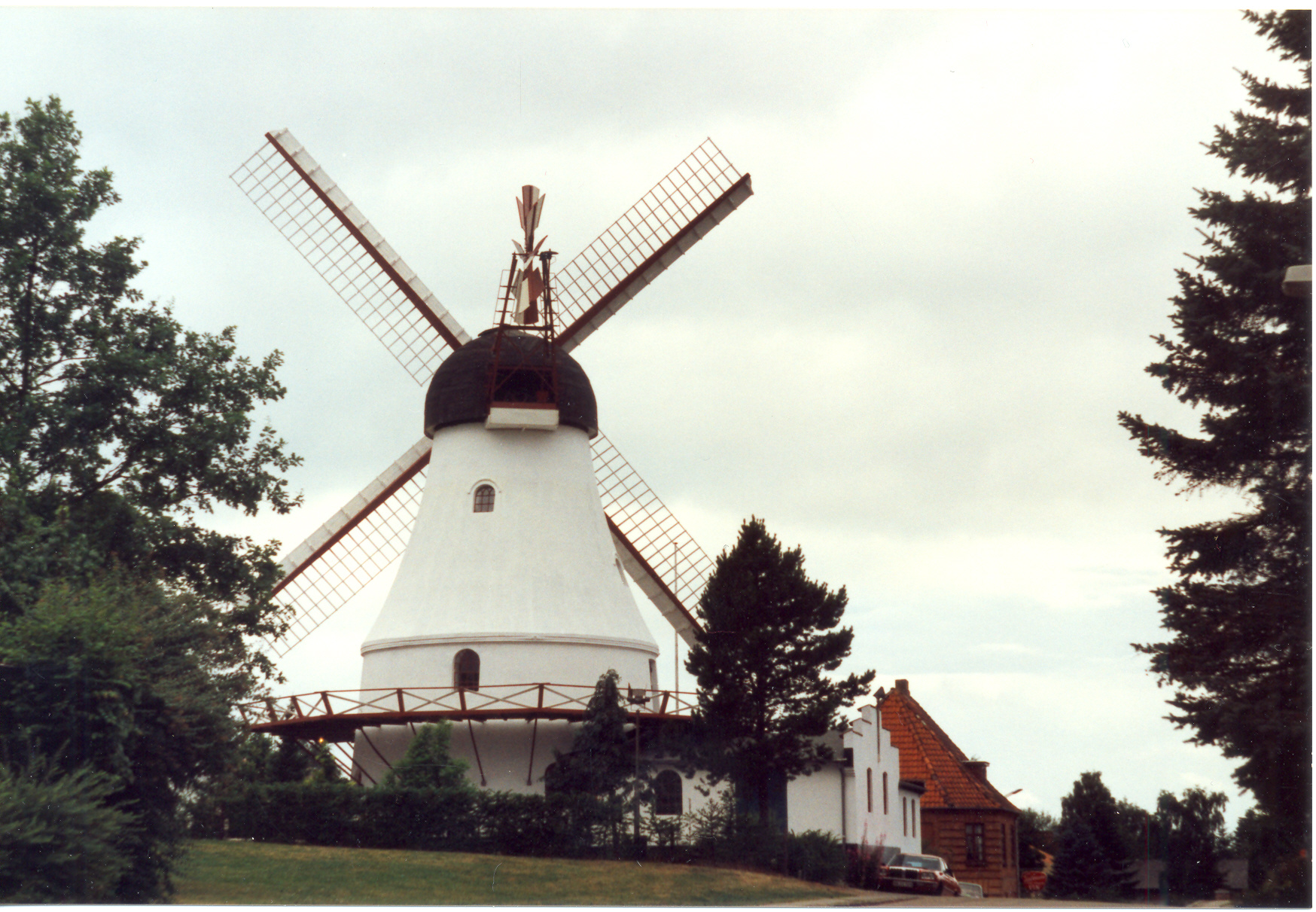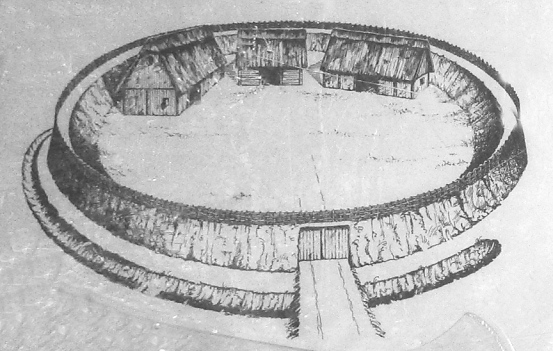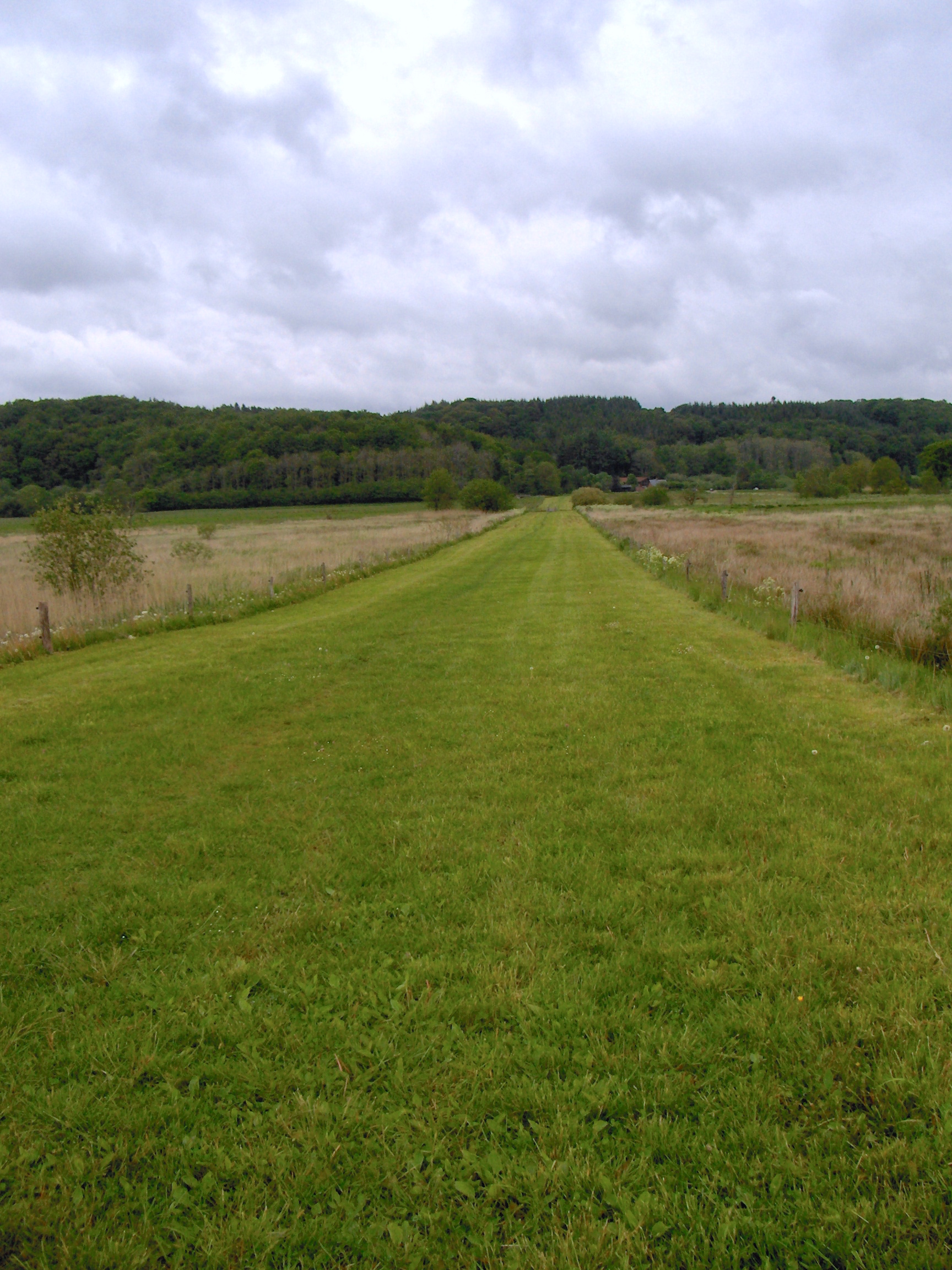|
Troldborg Ring
The Troldborg Ring is an Iron Age fortification in Vejle Municipality in Denmark, west of the city of Vejle. It is located at a natural spring on a high point overlooking the Vejle River Valley. The surrounding area is a steep ravine known as the Devil's Valley ( da, Fandens Dal). The site consists of a raised area of about surrounded by a circular rampart ( da, ringborg). One side is protected by a steep drop of to the valley floor, while the other side features a , moat. The Troldborg Ring was built around the years 100-200 during a period of turbulence in Denmark, and it was used until around the year 400. It likely served as a refuge during times of violence rather than a permanent dwelling. It is located north of the former Ravning Bridge over Vejle River, built in 979-980 during the Viking Age The Viking Age () was the period during the Middle Ages when Norsemen known as Vikings undertook large-scale raiding, colonizing, conquest, and trading throughout Europe a ... [...More Info...] [...Related Items...] OR: [Wikipedia] [Google] [Baidu] |
Iron Age Scandinavia
Iron Age Scandinavia (or Nordic Iron Age) was the Iron Age, as it unfolded in Scandinavia. Beginnings The 6th and 5th centuries BC were a tipping point for exports and imports on the European continent. The ever-increasing conflicts and wars between the central European Celtic tribes and the Mediterranean cultures destabilized old major trade routes and networks between Scandinavia and the Mediterranean, eventually breaking them down. Archaeology attests a rapid and deep change in the Scandinavian culture and way of life due to various reasons which have not yet been sufficiently analyzed. Agricultural production became more intensified, organized around larger settlements and with a much more labour-intensive production. Slaves were introduced and deployed, something uncommon in the Nordic Bronze Age. The rising power, wealth and organization of the central European tribes in the following centuries did not seem to instigate an increased trade and contact between Scandinavia ... [...More Info...] [...Related Items...] OR: [Wikipedia] [Google] [Baidu] |
Denmark
) , song = ( en, "King Christian stood by the lofty mast") , song_type = National and royal anthem , image_map = EU-Denmark.svg , map_caption = , subdivision_type = Sovereign state , subdivision_name = Danish Realm, Kingdom of Denmark , established_title = History of Denmark#Middle ages, Consolidation , established_date = 8th century , established_title2 = Christianization , established_date2 = 965 , established_title3 = , established_date3 = 5 June 1849 , established_title4 = Faroese home rule , established_date4 = 24 March 1948 , established_title5 = European Economic Community, EEC 1973 enlargement of the European Communities, accession , established_date5 = 1 January 1973 , established_title6 = Greenlandic home rule , established_date6 = 1 May 1979 , official_languages = Danish language, Danish , languages_type = Regional languages , languages_sub = yes , languages = German language, GermanGerman is recognised as a protected minority language in t ... [...More Info...] [...Related Items...] OR: [Wikipedia] [Google] [Baidu] |
Vejle
Vejle () is a city in Denmark, in the southeast of the Jutland Peninsula at the head of Vejle Fjord, where the Vejle River and Grejs River and their valleys converge. It is the site of the councils of Vejle Municipality ('' kommune'') and the Region of Southern Denmark. The city has a population of 60,231 () making it the ninth largest city in Denmark. Vejle Municipality has a population of 119,007 () making it the fifth largest municipality in Denmark. The city is part of the Triangle Region, which includes the neighbouring cities of Kolding and Fredericia and it is located 110 kilometres (68 miles) north of Germany. Vejle is most known for its forested hills, fjord, harbour, shopping, pedestrian mall, and windmill. History The word "Vejle" derives from the Old Danish word ''wæthel'', meaning "ford" or "wading place" due to its location at a busy crossing over Vejle River. During Viking times, the wetlands around Vejle had to be crossed at the Ravning Bridge, a nearly hal ... [...More Info...] [...Related Items...] OR: [Wikipedia] [Google] [Baidu] |
Spring (hydrology)
A spring is a point of exit at which groundwater from an aquifer flows out on top of Earth's crust (pedosphere) and becomes surface water. It is a component of the hydrosphere. Springs have long been important for humans as a source of fresh water, especially in arid regions which have relatively little annual rainfall. Springs are driven out onto the surface by various natural forces, such as gravity and hydrostatic pressure. Their yield varies widely from a volumetric flow rate of nearly zero to more than for the biggest springs. Formation Springs are formed when groundwater flows onto the surface. This typically happens when the groundwater table reaches above the surface level. Springs may also be formed as a result of karst topography, aquifers, or volcanic activity. Springs also have been observed on the ocean floor, spewing hot water directly into the ocean. Springs formed as a result of karst topography create karst springs, in which ground water travels through ... [...More Info...] [...Related Items...] OR: [Wikipedia] [Google] [Baidu] |
Vejle River
Vejle River ( da, Vejle Å, also called Sønderåen, "South River") is an approximately river in Vejle Municipality in Denmark. Its source is Engelsholm Lake near the village of Nørup. It first runs south to converge with the Egtved River near the village of Egtved, then flows northeast for through the Vejle River Valley ( da, Vejle Ådal) until it reaches the city of Vejle. There, the river meets the Grejs River and then empties into Vejle Fjord. Vejle River Valley and Vejle Fjord together form the longest tunnel valley in eastern Jutland. The lower river has an urban character where it runs through downtown Vejle, while the upper river is rural and is used for fishing and recreation. Geology Vejle River Valley forms a continuous geological feature with Vejle Fjord, and together the valley and fjord make up the longest tunnel valley in eastern Jutland, with a length of about and a width of up to . The shape of the current valley was formed during the last glacial period ... [...More Info...] [...Related Items...] OR: [Wikipedia] [Google] [Baidu] |
Circular Rampart
A circular rampart (German: ''Ringwall'') is an embankment built in the shape of a circle that was used as part of the defences for a military fortification, hill fort or refuge, or was built for religious purposes or as a place of gathering. The period during which these structures were built ranged from the Neolithic to the Middle Ages. Construction The key feature of a circular rampart is that the embankment formed the primary element of the defensive fortification. It can be constructed in various ways: as a simple earth embankment, as a wood and earth structure, or as a wall. Circular ramparts usually have a moat or ditch in front of them; the embankment can be enhanced with a wooden palisade. Often several concentric rings were built, which produced a more effective defensive position against attackers. The interior of such sites often shows evidence of buildings such as halls, barns, and other secondary structures. Locations Circular ramparts are found in north and we ... [...More Info...] [...Related Items...] OR: [Wikipedia] [Google] [Baidu] |
Ravning Bridge
The Ravning Bridge (Danish: ''Ravningbroen'') was a former 760 m long timber bridge, built in Denmark in the 10th century during the Viking Age. Located 10 km south of Jelling near the village of Ravning, it crossed the meadows of Ravning Enge at Vejle River. Until the Little Belt Bridge was constructed in 1935, it was the longest bridge in Denmark. Discovery and dating In 1953, big shaped oak timber was found near Ravning at the south side of the Vejle River Valley. An amateur archaeologist, K.V. Christensen, heard about the findings, and measured the timber. Later more timber was found where ponds for fish farming were constructed, this time at the north side of the valley. K.V. Christensen concluded that the timber probably was from a bridge and wrote an article about that in 1959. Later the mire in the river valley sank as the result of drainage and regulation of Vejle River, and the top of some of the bridge posts came over the ground surface. Now the National Museum ... [...More Info...] [...Related Items...] OR: [Wikipedia] [Google] [Baidu] |
Viking Age
The Viking Age () was the period during the Middle Ages when Norsemen known as Vikings undertook large-scale raiding, colonizing, conquest, and trading throughout Europe and reached North America. It followed the Migration Period and the Germanic Iron Age. The Viking Age applies not only to their homeland of Scandinavia but also to any place significantly settled by Scandinavians during the period. The Scandinavians of the Viking Age are often referred to as ''Vikings'' as well as ''Norsemen'', although few of them were Vikings in sense of being engaged in piracy. Voyaging by sea from their homelands in Denmark, Norway, and Sweden, the Norse people settled in the British Isles, Ireland, the Faroe Islands, Iceland, Greenland, Normandy, and the Baltic coast and along the Dnieper and Volga trade routes in eastern Europe, where they were also known as Varangians. They also briefly settled in Newfoundland, becoming the first Europeans to reach North America. The Norse-Gaels, ... [...More Info...] [...Related Items...] OR: [Wikipedia] [Google] [Baidu] |
Archaeological Sites In Denmark
Archaeology or archeology is the scientific study of human activity through the recovery and analysis of material culture. The archaeological record consists of artifacts, architecture, biofacts or ecofacts, sites, and cultural landscapes. Archaeology can be considered both a social science and a branch of the humanities. It is usually considered an independent academic discipline, but may also be classified as part of anthropology (in North America – the four-field approach), history or geography. Archaeologists study human prehistory and history, from the development of the first stone tools at Lomekwi in East Africa 3.3 million years ago up until recent decades. Archaeology is distinct from palaeontology, which is the study of fossil remains. Archaeology is particularly important for learning about prehistoric societies, for which, by definition, there are no written records. Prehistory includes over 99% of the human past, from the Paleolithic until the advent o ... [...More Info...] [...Related Items...] OR: [Wikipedia] [Google] [Baidu] |






.jpg)